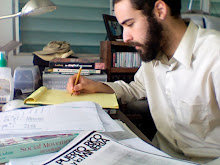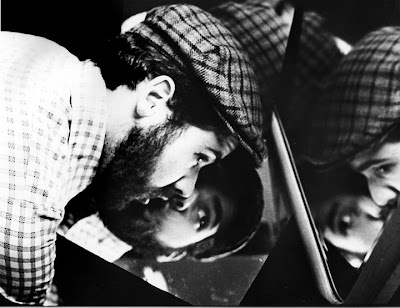 |
| "Te quiero, pero me das miedo" |
As a photographer, I´m rarely pictured in my images because I´m logically usually behind the camera. Many photographers hide behind their cameras, using the visual-psychological barrier that´s created within the lens to distance themselves from the world they´re capturing. When we put a camera between ourselves and the world, the process of focusing, adjusting apertures, and searching for the perfect angles effectively alienates us from the image we are creating. This alienation makes it easier for us to show our work to others and not feel vulnerable. This way, if it sucks, well, it was the camera, the day, bad juju... If it´s awesome, then cool, let´s make some money out of it. We thus relieve ourselves from the emotional angst that usually accompanies making real art and showing it to the world.
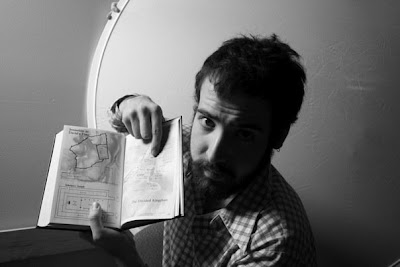 |
| Here´s the story of my life... hope it doesn´t freak you out. |
Our art is a part of ourselves, and the minute we show it to others we can feel vulnerable, fragile, as if we were naked in front of all to see. No matter the nature of the art-piece, the message we send to others is usually one we believe in, and commonly one we feel deeply identified with in some way. Thus, if we truly want to create art photography we have to attempt to brake that barrier set by the technicisms of the camera. There are many ways of doing this. An obvious one is to not get lost in the technicisms, just take as many pictures as possible. Especially now addays with the overabundance of Digital SLRs, the photographer truly has nothing to loose by simply taking hundreds of pictures in the moment and then, with some patience, looking over them for the perfect shot. This is in fact what many famous photojournalists do. They don´t sit in front of the event trying to get the perfect focus, aperture, or angle in the moment. If they did this they would never be able to record the most important moments in history. For them, the camera is really an extension of their eyes. It´s only after the event that they can take the time to reflect upon the events and examine for the best image. This is a good approach, but it takes time to let go and loosen up behind the technical camera. It becomes even harder to loosen up when you use film and every picture you take costs... a lot.
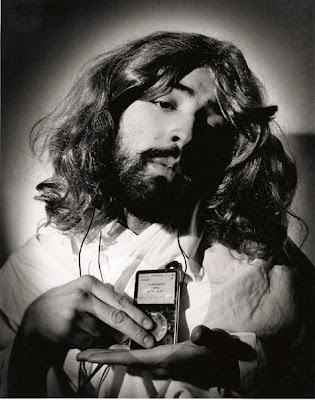 |
| Let me show you the way |
Therefore, we have alternative photographic processes. There are hundreds of ways of letting go of the technical camera and beginning to un-learn photography so that it is more like art and less like a dull record of space and events. Here, I´m only going to show three of these ways as I explored them when I embarked on the project of eliminating my alienation from the world I viewed behind my lens.
Here´s a little background on my experience with alternative photography: I learned about it in college from my amazing mentor and professor Donald Albrecth. I started my courses with him like your average beginner photographer, meaning that I took pictures of fairly uninteresting things. Although he never said my pictures were boring (which was important for me!), he did guide me into the telling of stories with pictures. When he critiqued a picture of mine, he would ask,
"what is the story behind this? What is there here that tells us this picture is more than just a picture of a (insert name of inanimate object or person here)?"
this made approach photography different, and I started attempting to tell stories with my images. I started by dealing with my views on my religious country with my project titled "Where is Jesus?" Then I focused on expressing the way cities and towns felt. these pictures were interesting and they told a much better story than my previous ones. However, I started noticing that my treatement of my subjects was rather artificial and I really wasn´t interested in digging in too deeply into myself for these stories.
However, during the process of learning alternative photography methods, my father-who raised me-died. Vulnerable, lost, and confused, I attempted to use photography as a medium to make sense of myself, and thus the next few pictures that I will display stem from that.
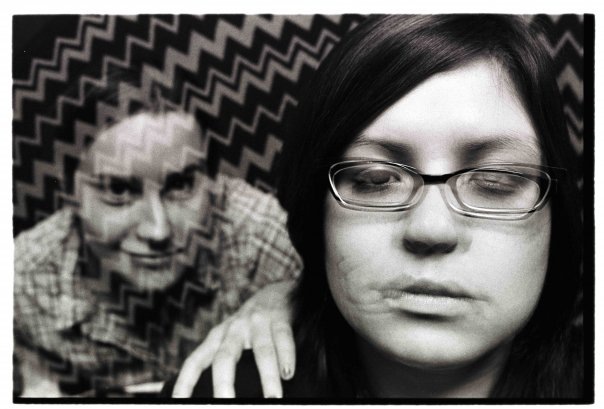 |
Ghosts (Double Exposure)
|
Double Exposures are one of my favorite techniques for telling stories. By exposing the film twice in the same place, you get a "ghost-like" image in front of any other image you have. They way to this varies by camera, but the essential principal to remember is that one cannot let the film roll forward when you want to combine two images un one frame.
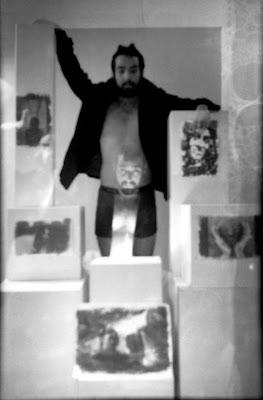 |
| Desde Adentro (Double Exposure) |
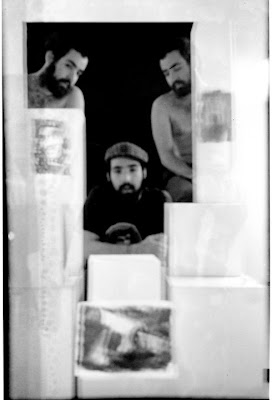 |
| El Juicio (Double Exposure) |
If combining pictures is not they way you want to tell your story, then you might consider the pinhole camera if your intent is to have more primal images. Pinholes cameras are the most basic and cheap cameras. You can make them out of pretty much everything. To create them you have to create and almost perfect hole (usually with a pin) that then operates as the "lens" when set up in a camera obcura setting. For my images I used a show box and decided to use two holes instead of just one. The results were interesting indeed...
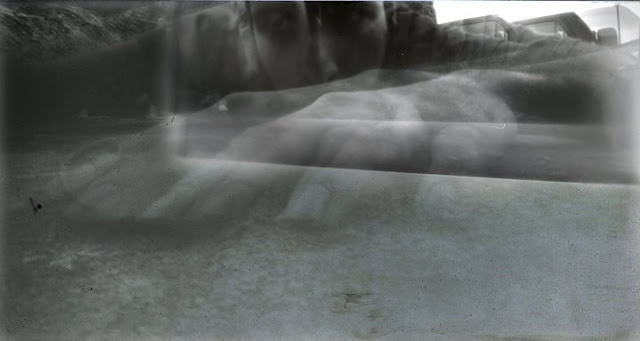 |
| Entra (Shoebox Double Pinhole) |
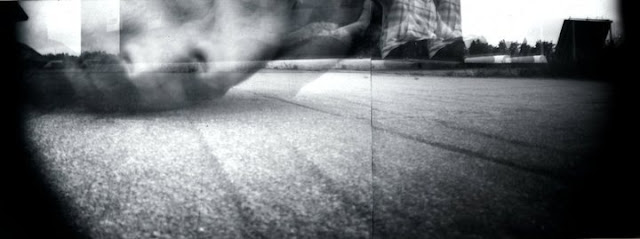 |
| Rest (Shoebox Double Pinhole) |
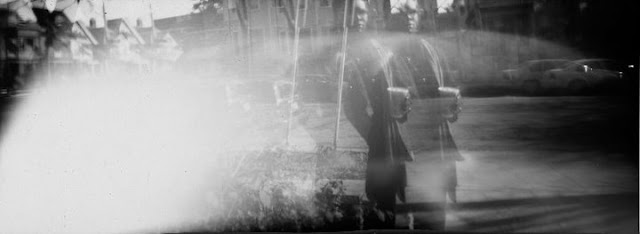 |
| Alexander (Shoebox Double Pinhole) |
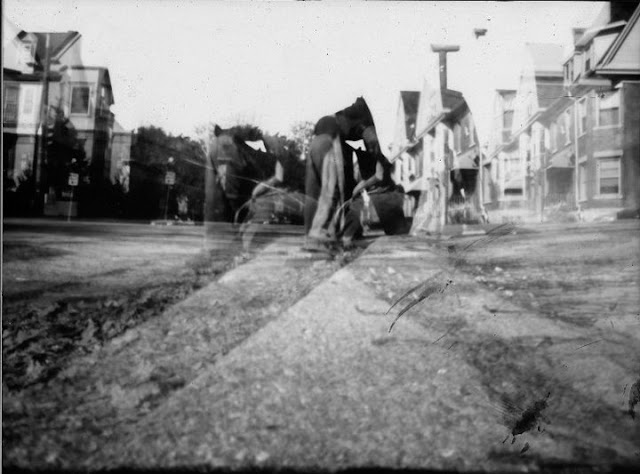 |
| The Curb (Shoebox Double Pinhole) |
If you don´t feel like building your own unpredictable camera, then you can buy it! The Holga, an inexpensive plastic camera designed by T.M. Lee in 1981 in China. It gives the photographer a unique opportunity to relieve himself of the technicalities of professional photography and become an amateur again. It´s unpredictableness and defectiveness makes it the perfect tool for the introspective process. It has four focus settings: portrait, nuclear family, ceo group photo-up, and mountains. It also has two appertures: sunny and cloudy. You can never tell how your images are finally going to turn out like until you develop them.
I really like to use the Holga because of it´s ease of use, portableness and also because the images it creates are as close as I can get to a visual record of how I remember places, or people. The imperfections in the camera reflect the imperfections in my memory, and it´s tendency to make everything look beautiful also reflect my tendency to romanticize everything. Thus, it´s an amazing tool!
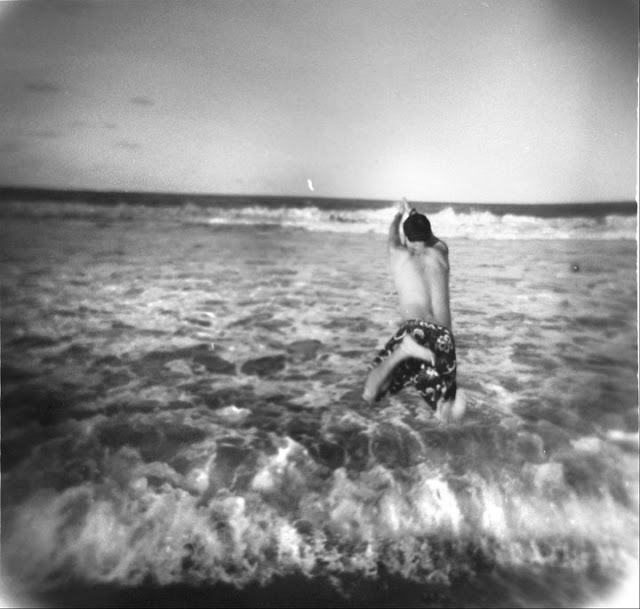 |
| Pa´ Dentro (Holga) |
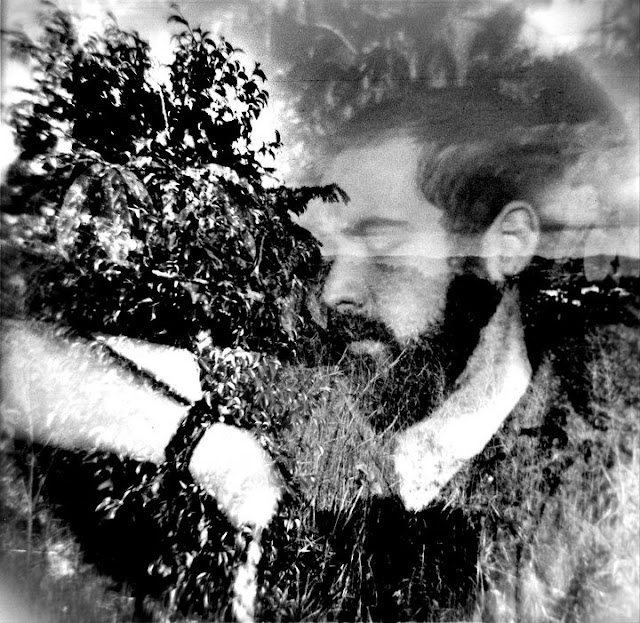 |
| On Time (Holga Double Exposure) |
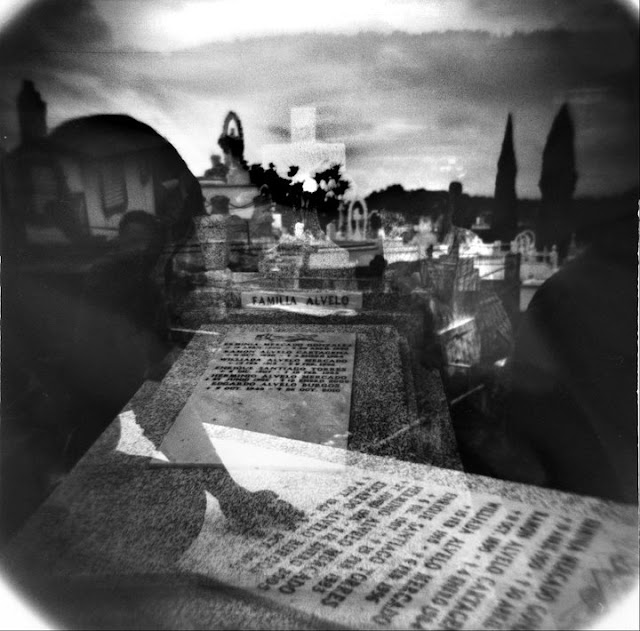 |
| La Familia (Holga Multiple Exposure) |







